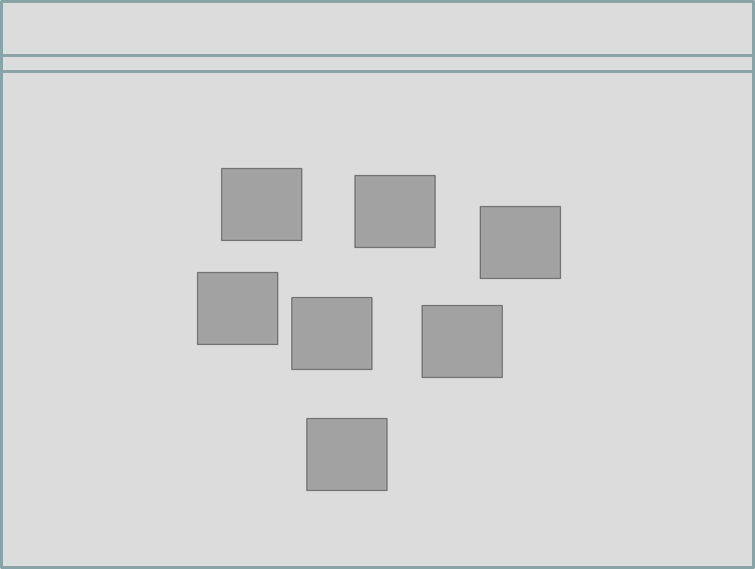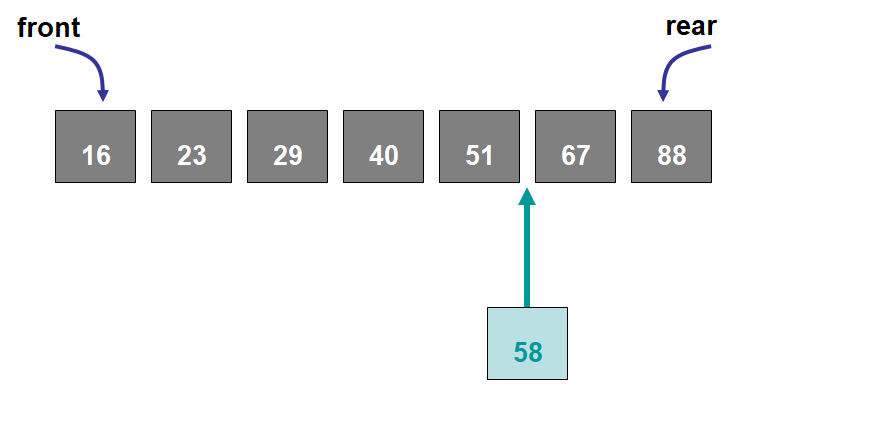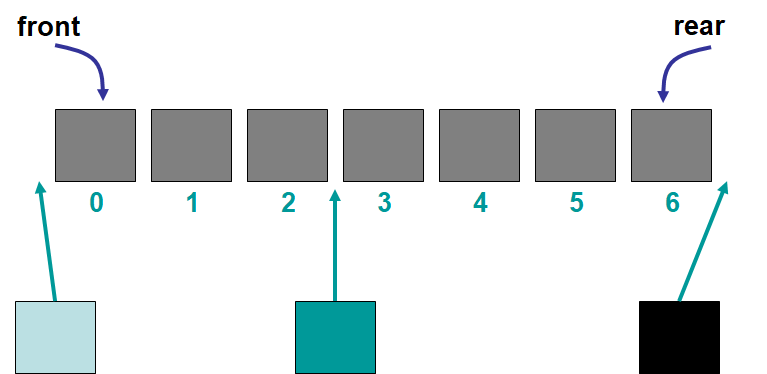16. The Bag ADT
Like stacks and queues, a bag is a data structure
However, bags are more general than stacks and queues
Bags have more flexibility on how they are used
Where and how elements are added, removed, and accessed
16.1. Bags

A representation of an arbitrary bag containing seven elements.
The high-level idea of a bag shouldn’t really be thought of as having an ordering
The underlying implementation may be with some linear container
But the idea is that the information in the bag has no meaningful order
Like the other collections, there needs to be a way to
Add
Remove
Get the size
Check if it’s empty
But given the more general definition of the bag, how exactly these should be done is not obvious
Adding to a Bag
How should elements be added?
Where should they go?
Removing from a Bag
How should elements be removed?
Where should they be removed from?
Other potential functionality?
Access a specific element?
Check if a given element exists?
…
Notice that the general idea of the bag is quite high-level and the answer to the above questions really depends
To help determine how these operations should work, more specialized bags can be defined
Although there are several possibilities for specialized bags, the ones covered here are
Sorted Bags
Indexed Bags
16.1.1. Sorted Bag
If the elements must be sorted, then how they are added and removed must be done carefully
Unlike the general bag, this specific kind of bag will have an ordering
The ordering of the elements will depend on some characteristic of the contents of the bag
Numbers in ascending order
Strings in alphabetical order
The elements themselves are what determine the ordering

Example sorted bag of seven integers. The integer 58 is to be added to the collection.
There is only one way to add the element to the sorted bag
The element must be added such that the sorted property of the bag is preserved

Example of inserting the integer 58 into the only valid spot in the sorted bag. Notice that the integer 67
is the first element within the sorted bag that is larger than the element being added.
Should there be restrictions on how elements are removed?
16.1.2. Indexed Bags
Indexed bags are bags where the elements are referenced by a numeric position
The numeric position is called the index
Like arrays or Python lists
This specific kind of bag will have an ordering
Element position is important
The elements are not sorted based on some property of the elements
User determines the ordering of the elements
Every time an element is added or removed, the indices may need to change

Example indexed bag with seven elements. The three elements are to be added to the specified locations within the bag. One element is to be added to the front, another to the middle, and the last to the end.

Example of the indexed bag after three elements were added to the front, middle, and end of the bag. Note that the elements’ indices changed as a result of the adds.
Elements can be added to any arbitrary index, assuming it is valid
The specified index would be the index it should exist at after adding
Like adding, elements can be removed from any valid index
16.2. Functionality
The bag interface will be kept simple
Add an element
Remove a specific element
Check if an element is contained in the bag
Count the number of occurrences of an element in the bag
Check if it’s empty
Get the size
Get an iterator for the bag
Iterators are handy tools for looping and consistency
More on iterators later
1public interface Bag<T> extends Iterable<T> {
2
3 boolean add(T element);
4 boolean remove(T element);
5 boolean contains(T target);
6 int count(T target);
7 boolean isEmpty();
8 int size();
9 Iterator<T> iterator();
10}
16.2.1. Sorted Bag Functionality
A sorted bag will do everything a bag can
However, there will be some specific requirements for the sorted bag
Add happens such that the sorted property is preserved
Remove the first element
Remove the last element
Get the first element (but leave it in the bag)
Get the last element (but leave it in the bag)
1public interface SortedBag<T extends Comparable<? super T>> extends Bag<T> {
2
3 @Override
4 boolean add(T element);
5 T removeFirst();
6 T removeLast();
7 T first();
8 T last();
9}
Notice that, despite wanting all the
Bagmethods, they are not included in theSortedBaginterfaceThis is because the
SortedBagextends theBaginterfacepublic interface SortedBag<T extends Comparable<? super T>> extends Bag<T>
The
extendskeyword means that this interface/class will inherit all the methods from the class being extendedBagis being extended in this caseSimilarly, the type
Tis extendingComparable—T extends Comparable<? super T>This will be discussed in more detail later
Although not explicitly included in the
SortedBaginterface, the methods fromBagare still part of what defines aSortedBagA
SortedBagcannot be implemented without implementing all the methods from theBaginterface
The idea of inheritance will be discussed in more detail later
16.2.2. Indexed Bag
Similar to the
SortedBaginterface, theIndexedBaginterface will make use of inheritance by extending theBaginterfaceIn addition to the
Bagmethods,IndexedBagspecific methods are includedAdd an element to a specific index
Remove an element from a specific index
Change (set) the element at a specific index
Get an element at a specific index
Find the index of a specified element
1public interface IndexedBag<T> extends Bag<T> {
2
3 @Override
4 boolean add(T element);
5 boolean add(int index, T element);
6 T set(int index, T element);
7 T get(int index);
8 T remove(int index); // Different signature from the inherited remove
9 int indexOf(T element);
10}
16.3. For Next Time
Read Chapter 6 Section 1 – 5 on Lists
23 pages
16.3.1. Playing Code
Download the various bag interfaces: